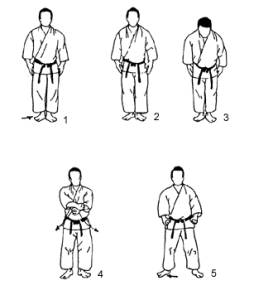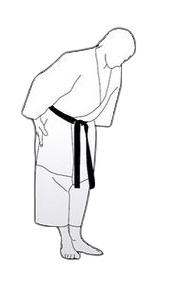It is common knowledge that bowing is customary in Japan. Watching the Japanese bow at any place and any time can appear amusing to our foreign eyes. Conversely, do we find watching people shake hands amusing? In the Western world, we typically offer our hands when we wish to be perceived as showing sincerity. The Japanese prefer to bow. Like the handshake, the bow can convey a salutation, a farewell, or an expression of thanks and gratitude.
The bow, although, is not the exact equivalent of the handshake. Handshakes have little variation, other than length of time and the strength employed. This may tell one very little, other than one or both persons have strong hands. On the other hand, the bow can convey a number of different things to its partakers and observers alike. Various bows have different meanings. As well, the type and level of emotions that may be involved and the nature of the relationship between the persons bowing can be observed. Correct bowing is complex. There are different nuances involved with the type of bow and situation in which it is used. The depth of the bow depends on the relationship between the two people meeting. Bows can range from shallow nods to kneeling bows where one's head touches the floor. This latter bow, however, is seldom practiced or seen these days. As well as replacing the handshake, a bow can replace "thank you", "please" and other commonly used terms of gratitude and respect.
From shizentai stance (natural stance with the feet in shoulder length apart) with your arms and open hands extended on the sides of your body. Explanation given using the illustration below at front viewpoint.

Standing bow guide
1.
2.
3.
4.
5.
Standing bow is not too difficult for the westerners and most practitioners perform well with this bowing ritual.

Standing bow (Ritsurei)
Kneeling Bow



